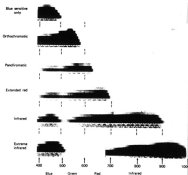Claudia Moroni
Member
Sorry, it took me a while, but I've finally processed the Ilford Ortho sheets, so that I can update this thread and show you the results.



I did a 3 minutes pre wash and then I developed them in Rollei Low Contrast 1+4 (300ml of solution) using the Jobo CPE-2 and continuos agitation at 20 °C for 9 and a half minutes
The films were exposed at 50 iso.



I did a 3 minutes pre wash and then I developed them in Rollei Low Contrast 1+4 (300ml of solution) using the Jobo CPE-2 and continuos agitation at 20 °C for 9 and a half minutes
The films were exposed at 50 iso.
Last edited by a moderator:
















